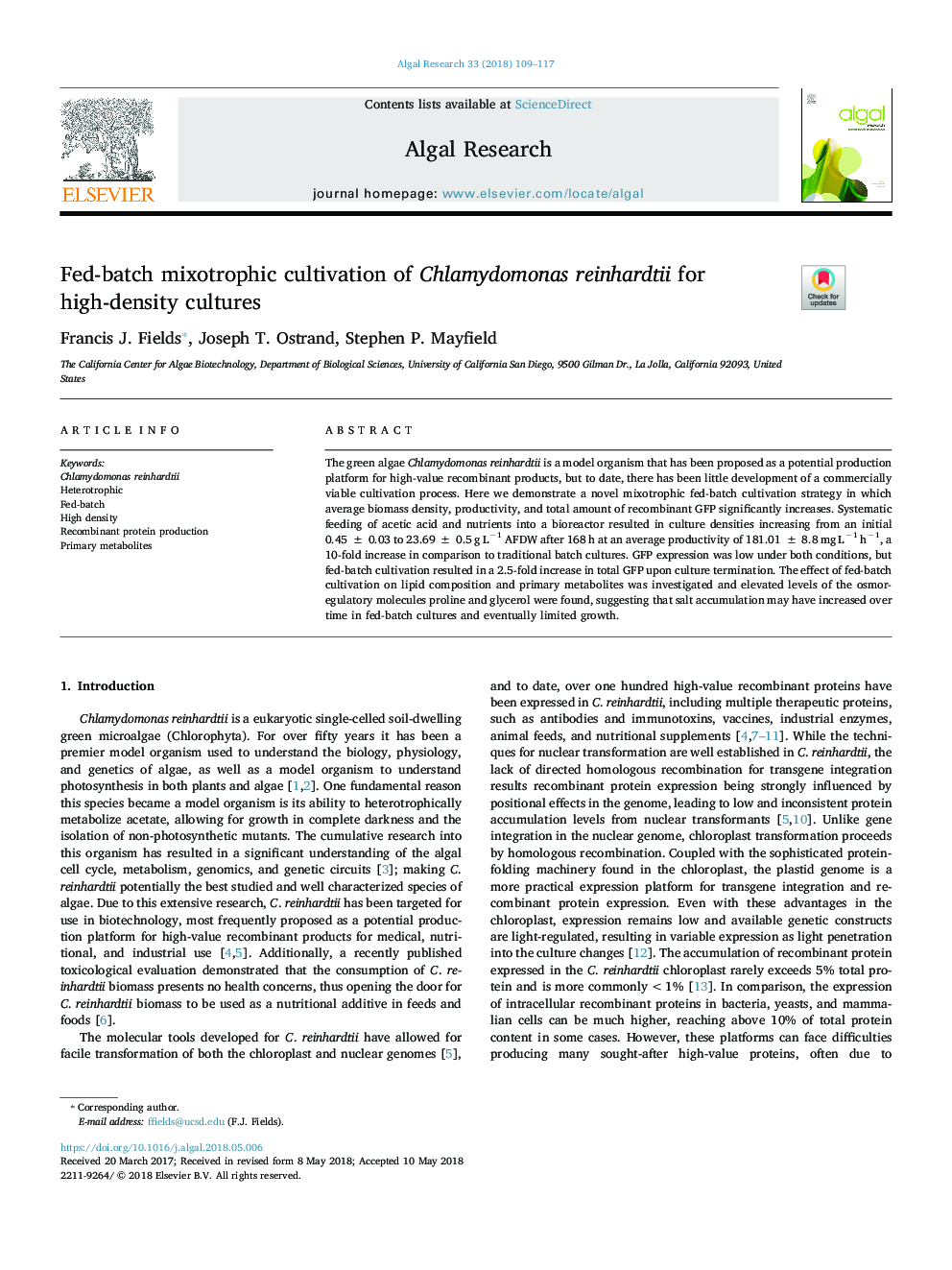| Article ID | Journal | Published Year | Pages | File Type |
|---|---|---|---|---|
| 8085697 | Algal Research | 2018 | 9 Pages |
Abstract
The green algae Chlamydomonas reinhardtii is a model organism that has been proposed as a potential production platform for high-value recombinant products, but to date, there has been little development of a commercially viable cultivation process. Here we demonstrate a novel mixotrophic fed-batch cultivation strategy in which average biomass density, productivity, and total amount of recombinant GFP significantly increases. Systematic feeding of acetic acid and nutrients into a bioreactor resulted in culture densities increasing from an initial 0.45â¯Â±â¯0.03 to 23.69â¯Â±â¯0.5â¯gâ¯Lâ1 AFDW after 168â¯h at an average productivity of 181.01â¯Â±â¯8.8â¯mgâ¯Lâ1â¯hâ1, a 10-fold increase in comparison to traditional batch cultures. GFP expression was low under both conditions, but fed-batch cultivation resulted in a 2.5-fold increase in total GFP upon culture termination. The effect of fed-batch cultivation on lipid composition and primary metabolites was investigated and elevated levels of the osmoregulatory molecules proline and glycerol were found, suggesting that salt accumulation may have increased over time in fed-batch cultures and eventually limited growth.
Keywords
Related Topics
Physical Sciences and Engineering
Energy
Renewable Energy, Sustainability and the Environment
Authors
Francis J. Fields, Joseph T. Ostrand, Stephen P. Mayfield,
